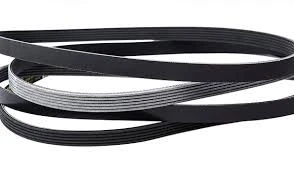- Arabic
- French
- Russian
- Spanish
- Portuguese
- Turkish
- Armenian
- English
- Albanian
- Amharic
- Azerbaijani
- Basque
- Belarusian
- Bengali
- Bosnian
- Bulgarian
- Catalan
- Cebuano
- Corsican
- Croatian
- Czech
- Danish
- Dutch
- Afrikaans
- Esperanto
- Estonian
- Finnish
- Frisian
- Galician
- Georgian
- German
- Greek
- Gujarati
- Haitian Creole
- hausa
- hawaiian
- Hebrew
- Hindi
- Miao
- Hungarian
- Icelandic
- igbo
- Indonesian
- irish
- Italian
- Japanese
- Javanese
- Kannada
- kazakh
- Khmer
- Rwandese
- Korean
- Kurdish
- Kyrgyz
- Lao
- Latin
- Latvian
- Lithuanian
- Luxembourgish
- Macedonian
- Malgashi
- Malay
- Malayalam
- Maltese
- Maori
- Marathi
- Mongolian
- Myanmar
- Nepali
- Norwegian
- Norwegian
- Occitan
- Pashto
- Persian
- Polish
- Punjabi
- Romanian
- Samoan
- Scottish Gaelic
- Serbian
- Sesotho
- Shona
- Sindhi
- Sinhala
- Slovak
- Slovenian
- Somali
- Sundanese
- Swahili
- Swedish
- Tagalog
- Tajik
- Tamil
- Tatar
- Telugu
- Thai
- Turkmen
- Ukrainian
- Urdu
- Uighur
- Uzbek
- Vietnamese
- Welsh
- Bantu
- Yiddish
- Yoruba
- Zulu
nóv . 19, 2024 03:11 Back to list
Exploring Mechanical Drives and Belt Systems for Efficient Power Transmission Solutions
Mechanical Drives and Belting An Overview
Mechanical drives and belting systems are crucial components in various industrial applications, providing effective means to transmit power and motion between different machinery. From simple conveyor belts to complex drive systems in manufacturing plants, understanding the basics of mechanical drives and belting is essential for engineers and technicians alike.
What Are Mechanical Drives?
Mechanical drives consist of various components designed to transmit power across different parts of machinery. They play an essential role in converting the energy from a motor into usable mechanical energy, enabling machines to perform tasks like cutting, shaping, and transporting materials. Mechanical drives include systems such as gears, chains, belts, shafts, and couplings. Each of these components has its own set of benefits and limitations, making them suitable for different applications.
One of the primary types of mechanical drives is the belt drive system. Belt drives use flexible loops—commonly made from rubber or synthetic materials—to connect and transmit power between pulleys. This setup is particularly advantageous for its ability to absorb shock, accommodate misalignment, and transfer motion over long distances. The design and materials used in belt drives directly impact their efficiency, lifespan, and overall performance.
Types of Belting
There are several types of belts used in mechanical drive applications, each crafted to serve specific functions. Some of the most common types include
1. Flat Belts These are simple belts that run in a horizontal or vertical position. They are effective for light to medium loads and can handle speed variations. Flat belts are often used in conveyor systems.
2. V-Belts Recognized for their trapezoidal cross-section, V-belts provide a higher friction grip than flat belts, allowing them to transmit greater power. These are commonly used in industrial machinery due to their efficiency in compact spaces.
3. Round Belts Round belts work similarly to V-belts but are circular in cross-section. They are typically utilized in situations requiring flexible arrangements, such as in small devices and hobby projects.
4. Timing Belts These belts contain teeth that fit into corresponding grooves on the pulleys. Timing belts are crucial for maintaining precise synchronization between components, making them particularly popular in automotive applications and CNC machines.
mechanical drives and belting

Each type of belting has its unique strengths and weaknesses. Therefore, selecting the right type of belt for a specific application is essential for ensuring operational effectiveness.
Advantages of Belt Drives
Belt drives offer several advantages that contribute to their widespread use in various industries. Some key benefits include
- Simplicity The design of belt drives allows for straightforward installation and maintenance compared to other mechanical drive systems, like gear systems.
- Flexibility Belts can be easily adjusted to accommodate changes in the distance between pulleys, which can be particularly beneficial in dynamic environments.
- Noise Reduction Belt drives operate more quietly than gear systems, making them ideal for applications requiring minimal noise disruption.
- Cost-effectiveness In many cases, mechanical belting systems are less expensive to manufacture and install than alternative systems, providing a cost-effective solution for power transmission.
Challenges and Considerations
While belt drives offer numerous advantages, they also face certain challenges. Slip can occur in belts, leading to inefficiencies in power transmission. Additionally, wear and tear over time can affect performance, necessitating regular maintenance and potential replacement. Environmental factors, like temperature and humidity, can also impact the lifespan of belts, requiring careful consideration during material selection and system design.
Conclusion
Mechanical drives and belting systems represent a fundamental aspect of industrial machinery. Understanding the different types of belts and their applications, along with their advantages and challenges, is crucial for successful implementation in various settings. As technology continues to evolve and industries aim for higher efficiency and reliability, advancements in mechanical drives and belting systems will undoubtedly play a significant role in enhancing productivity and performance across multiple sectors.
-
Korean Auto Parts Timing Belt 24312-37500 For Hyundai/Kia
NewsMar.07,2025
-
7PK2300 90916-T2024 RIBBED BELT POLY V BELT PK BELT
NewsMar.07,2025
-
Chinese Auto Belt Factory 310-2M-22 For BMW/Mercedes-Benz
NewsMar.07,2025
-
Chinese Auto Belt Factory 310-2M-22 For BMW/Mercedes-Benz
NewsMar.07,2025
-
90916-02660 PK Belt 6PK1680 For Toyota
NewsMar.07,2025
-
drive belt serpentine belt
NewsMar.07,2025

